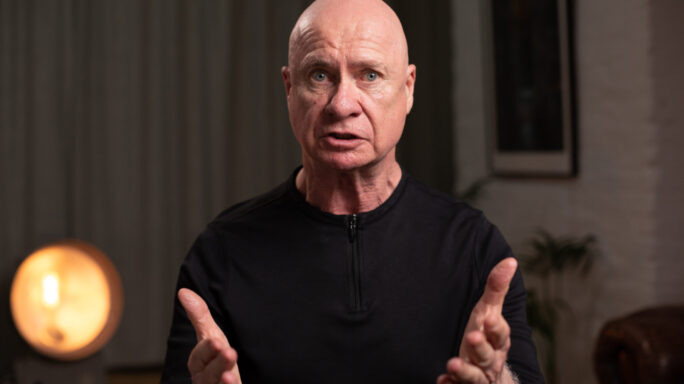Season 4: Thriving in a changing world
Navigating unpredictable change in business: the role of transition architecture

Change will be our only constant in the ever-evolving landscape of the next few decades. We’re entering an era where change, primarily driven by rapid technological advances, will touch every aspect of our lives. This includes everything from how we do business and how governments operate to our personal relationships and individual lifestyles. To navigate this constant state of change effectively, we need more than just resilience. We need a forward-thinking approach, which I call “Transition Architecture.”
Historian Yuval Noah Harari gave an analogy in an interview: “If traditionally people built identities like stone houses with profound foundations, now it makes more sense to build identities like tents that you can fold and move elsewhere. Because we don’t know where you will have to move, but you will have to move.”
Let’s think about this idea more simply. Instead of seeing our businesses, careers, and personal lives as fixed and unchangeable – like houses – imagine if we thought of them more like tents. This way of thinking is important for businesses as they move through the complicated world of digital and AI advancements.
While both a house and a tent serve the primary function of shelter, they differ dramatically in their structure, adaptability, and response to external changes. If our past world of work was emblematically a “house,” the fluidity and dynamism of our impending future can best be likened to a “tent”. Hence, “Transition Architecture” emerges as a crucial compass, guiding entities in reshaping their “tent”, ensuring they remain nimble and malleable without forsaking stability or safety.
Historically, every technological revolution has been accompanied by socio-economic disruptions. From the Luddites rebelling against mechanised looms during the Industrial Revolution to today’s concerns about AI taking over jobs, change has always been met with resistance and fear. Yet, looking back, we observe that humanity as a whole has benefitted. Our predecessors transitioned from washing clothes in rivers to washing machines, symbolising progress and development. The key was their ability to adapt, innovate, and evolve.
However, the challenges faced by previous generations were spaced out, allowing for adjustments over time. With the onset of challenges like COVID-19, where many entities, from large corporations to individuals, were caught unprepared, we’ve witnessed how predictions about the Future of Work have become more relevant almost overnight.
The sheer speed of technological advancements has drastically reduced this adjustment period. Businesses don’t have years to react; they have months.
Consider ChatGPT. Its ability to engage, comprehend, and assist in various tasks, from writing to problem-solving, epitomises the advancement in AI capabilities. ChatGPT isn’t merely a tool; it represents how AI intersects with our daily lives, challenging our traditional understanding of work, communication, and creation.
The transition isn’t just about the proliferation of AI-driven gadgets or streamlined processes. It’s about the fundamental reimagining of how our society operates. Automation isn’t merely altering our tools; it’s redefining job roles, responsibilities, and the very fabric of workplaces.
As shared in a report by McKinsey on workforce automation, by 2030, an overwhelming segment of the global workforce will have to pivot, either by enhancing their skill set or transitioning to new roles altogether. This statistic isn’t a distant reality; it’s a call for organisations to introspect, innovate, and integrate fresh perspectives and talents to spearhead this transformation.
Technological transformations, while inevitable, should not overshadow the importance of human emotions and well-being. Leaders must understand that change, especially when rapid, can be disconcerting for many. Open dialogues, workshops, and training sessions can demystify technological advancements, helping teams understand not just the “what” but the “why” behind transitions. Remember, even the most significant technological advances are futile if they aren’t understood or accepted by those who are meant to benefit from them.
Navigating the intricate dance of business adjustments requires an ability to foresee change and evaluate its scope and potential impact. To begin this, think about an audit of your current structures—are they houses or tents? Houses, while sturdy, resist change and can crumble when faced with it. Tents are built for adaptability. By identifying which parts of your organisation are rigid and flexible, you can understand where change will hit hardest and where it will flow naturally. Plotting a course through transition then becomes a matter of fortifying and adapting the “houses” while maximising the flexibility of the “tents”.
Technology is continuously propelling us into new terrains, from AI innovations reshaping job roles to digital tools redefining how businesses operate. Beyond being a catalyst for change, technology offers tools to navigate these shifts effectively. Sophisticated data analytics can predict market shifts, AI can personalise customer experiences to unprecedented degrees, and digital communication tools can unite teams. Embracing technology is not just about bracing for change; it’s about harnessing its power to guide us through that change more seamlessly.
In essence, the breakneck speed of technological evolution makes it imperative to guide individuals, businesses, and societies through these tumultuous waves of change. This journey isn’t about mere adaptation—it’s about thriving amidst chaos. Infused with a blend of human empathy, emotional intelligence, societal cognisance, and a dash of technical prowess, “Transition Architecture” stands as a lighthouse, beckoning us towards a future where we don’t just survive but flourish.




